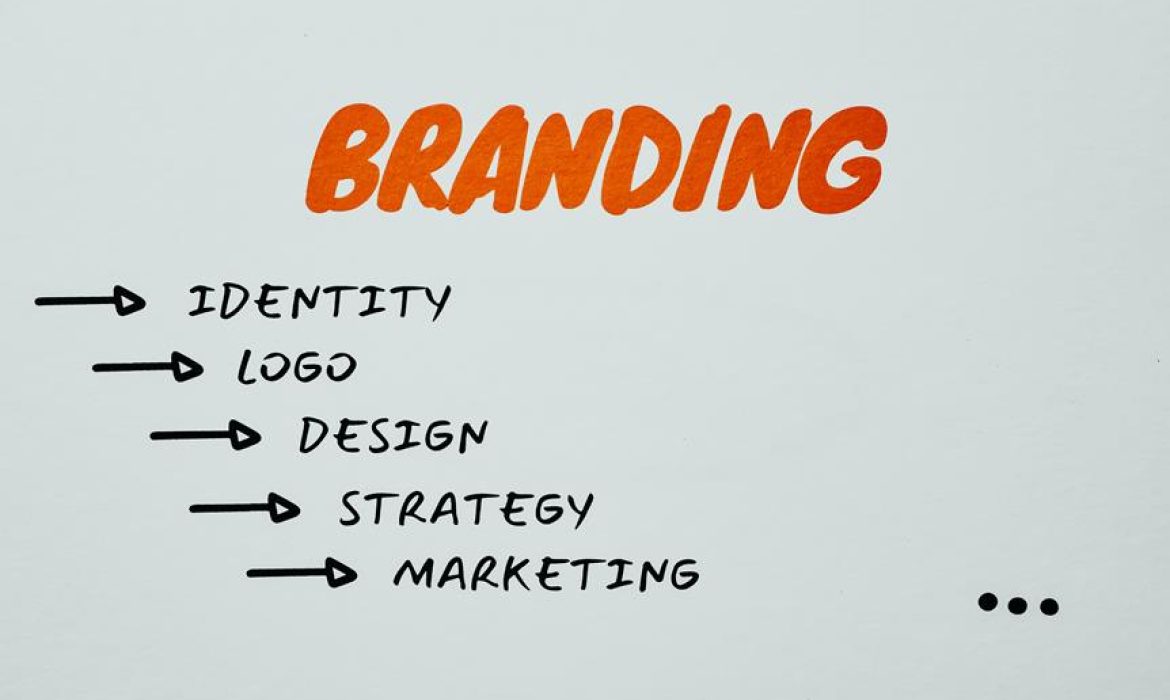In the complex world of branding, the significance of a logo cannot be overstated. It serves as the visual face of a brand, encapsulating its values and essence in a single, powerful image.
The attributes that define a great logo go beyond mere aesthetics; they embody the brand's identity, convey messages instantly, and leave a lasting impact on viewers. But what exactly are these attributes that transform a logo from good to exceptional?
Let's explore the key elements that make a logo truly outstanding and indispensable in the realm of brand representation.
Brand Identity Representation
In the realm of effective logo design, the paramount key lies in the seamless representation of brand identity through intricate visual elements. A logo serves as the visual embodiment of a brand's values, personality, and essence. It should encapsulate the brand's story and communicate it through clever visual storytelling.
Every element, from colors to shapes, must align with the brand's identity, ensuring instant recognition and emotional connection with the audience. Visual storytelling within a logo creates a lasting impression, evoking specific feelings and associations tied to the brand.
Instant Brand Communication
Within the realm of effective logo design, the seamless representation of brand identity transitions into instant brand communication, where visual elements speak volumes in conveying the essence and values of a brand at first glance.
A great logo captures brand emotion through its design, evoking specific feelings or associations that resonate with the target audience. The visual impact of a logo is crucial in creating a lasting impression and fostering brand recognition.
Memorable and Unique Design
Crafting a logo that is both memorable and unique is essential for establishing a distinctive brand identity that resonates with consumers. Design innovation and visual impact are crucial in creating a logo that stands out.
By infusing creative expression and iconic symbolism into the design, a logo can become a powerful tool for brand recognition. Striving for originality and creativity helps ensure that the logo leaves a lasting impression on the audience.
A memorable logo goes beyond aesthetics; it conveys the essence of the brand and communicates its values effectively. Embracing uniqueness in design elements and incorporating symbolism that speaks to the brand's identity are key aspects of creating a logo that captures attention and leaves a lasting impact.
Versatility Across Applications
Ensuring a logo's adaptability across various platforms and mediums is crucial for maintaining brand consistency and recognition. A logo must be versatile to be effective in different settings, from digital to print.
Color scheme creativity plays a vital role in this adaptability, allowing the logo to remain impactful regardless of the background it is placed on. Application diversity is another key aspect, ensuring the logo looks great on websites, social media profiles, merchandise, and more.
The logo's adaptability should not compromise brand message clarity; it should still communicate the brand's values and essence effectively. By prioritizing versatility in design, a logo can successfully represent a brand across a wide range of contexts.
Timeless Design Relevance
To ensure a logo's enduring impact in a rapidly evolving market, maintaining timeless design relevance is paramount for establishing a brand's long-term recognition and credibility.
A timeless design ensures that the logo remains fresh and relevant, standing the test of time amidst changing trends. By focusing on timeless elements, such as simplicity and classic aesthetics, a logo can effectively communicate the brand's values and messages consistently over the years.
This design approach enhances brand communication by creating a strong visual identity that resonates with consumers and fosters brand loyalty. Embracing timeless design principles in logo creation not only conveys professionalism but also helps differentiate the brand from competitors, making it a memorable and enduring symbol of the brand's essence.
Focus on Simplicity
Focusing on simplicity in logo design is essential for creating a visually impactful and memorable brand symbol. By focusing on minimalism and design clarity, a logo can effectively communicate the essence of a brand in a clean and straightforward manner.
Simple logos are more likely to be recognized and remembered by consumers, standing out in a cluttered marketplace. A minimalist approach ensures that the logo remains versatile across various applications and sizes, maintaining its integrity and impact.
Design clarity is crucial for conveying brand values and emotions instantly, establishing a strong connection with the target audience. Embracing simplicity in logo design not only enhances brand recognition but also contributes to a timeless and enduring design that transcends fleeting trends.
Scalability Across Sizes
Achieving optimal scalability across different sizes is a fundamental aspect of creating a versatile and impactful logo design. Size adaptability and logo consistency are crucial for ensuring that your logo maintains its visual scalability and design coherence across various applications.
A well-designed logo should be easily recognizable and maintain its integrity whether it's displayed on a small business card or a large billboard. By prioritizing scalability in your logo design, you can guarantee that your brand's visual identity remains strong and consistent, enhancing brand recognition and recall.
Consistency in logo size and design elements is key to ensuring that your logo looks great and maintains its impact across different platforms and merchandise, contributing to a successful branding strategy.
Versatility for Platforms
Maintaining a visually consistent and adaptable logo design is essential for ensuring its effectiveness across various platforms, highlighting the importance of versatility for brand representation. Platform adaptability and design consistency are crucial for cross-platform branding and design cohesion.
A logo must be versatile enough to maintain its integrity and impact whether displayed on a website, social media profile, business card, or merchandise. This adaptability ensures that the logo remains recognizable and impactful regardless of where it is used.
Emphasis on Originality
In the realm of logo design, originality stands as the cornerstone of crafting a compelling and distinctive brand identity. The importance of originality in logo design cannot be overstated, as it helps set a brand apart from its competitors and leaves a lasting impression on customers.
By incorporating unique design elements, such as custom typography or innovative graphics, a logo can effectively communicate the essence of a brand. Originality ensures that a logo is not only visually appealing but also memorable and timeless.
Design elements play a crucial role in achieving this originality, guiding the creation of a logo that resonates with target audiences and reflects the values and personality of the brand.
Reflecting Brand Values
Reflecting the core values of a brand through its logo design is essential for establishing a strong and meaningful visual identity. A logo that effectively reflects brand values creates an emotional connection with consumers, fostering loyalty and trust.
By incorporating elements that symbolize the brand's mission, vision, and beliefs, the logo becomes more than just a visual symbol; it becomes a representation of what the brand stands for. This emotional connection can resonate with customers on a deeper level, creating a lasting impression and differentiation from competitors.
When brand values are authentically reflected in a logo, it can enhance brand recognition, credibility, and overall perception in the eyes of consumers.
Creating a Unique Logo
Crafting a distinctive logo that sets your brand apart requires a strategic blend of creativity and market insight. To create a unique logo, emphasis should be placed on originality validation and design concept exploration.
Avoid replicating existing logos and ensure your logo stands out by being accountable for its originality. Dive into the design process with thorough exploration of concepts to guarantee a logo that is not only visually appealing but also differentiates your brand effectively.
Differentiating From Competitors
To effectively differentiate your brand from competitors, it is imperative to strategically position your logo as a unique symbol that encapsulates your brand's distinct identity and values. Your logo should stand out amidst competitors, conveying a message that sets you apart in the market.
By focusing on competitor differentiation, you can ensure that your logo is not only memorable but also leaves a lasting impression on your target audience. Emphasizing originality and creativity in your logo design will help establish a strong brand identity that resonates with customers.
A well-crafted logo that stands out from the crowd will enhance brand recognition and attract more attention to your business.
Enhancing Brand Recognition
Enhancing brand recognition is a fundamental aspect of establishing a strong market presence and fostering customer loyalty. Effective brand recognition strategies involve creating a logo that resonates with the target audience and reflects the brand's values.
Logo design psychology plays a crucial role in ensuring that the logo communicates the brand message instantly and leaves a lasting impression on consumers. By focusing on creating a memorable and unique logo that is versatile for various applications, businesses can enhance their brand recognition and stand out in a competitive market.
A well-designed logo not only conveys professionalism but also helps in building trust with customers, ultimately leading to increased brand loyalty and credibility.
Conveying Brand Credibility
Establishing brand credibility is a pivotal element in fostering trust and loyalty among consumers and differentiating a business in a competitive market.
A great logo plays a crucial role in conveying brand trust through its visual impact. The design elements, colors, and overall aesthetic of a logo can communicate professionalism and reliability, influencing how the brand is perceived by the audience.
A well-crafted logo not only enhances brand recognition but also reflects the values and ethos of the business, building a strong foundation for brand credibility.
Criteria for Logo Selection
Conveying brand credibility through a well-crafted logo involves a meticulous selection process based on specific criteria to ensure the logo effectively represents the brand essence and resonates with the target audience. When selecting a logo, consider logo color psychology and current design trends to evoke the desired emotions and stay relevant.
The logo design process should focus on simplicity, scalability, and versatility for different platforms. Strategic logo placement is vital for maximum visibility and impact. Ensure the logo is recognizable, practical, and simple while reflecting your brand's message, values, and vision.
It's essential to have a concept behind the design elements used and consider your target audience to create a resonating logo that stands out in the market. Professional logo designers play a crucial role in successful logo creation by addressing technical issues and aligning the design with audience preferences.
Frequently Asked Questions
How Can a Logo Contribute to Building Brand Loyalty Among Customers?
A logo plays a crucial role in building trust and emotional connection with customers. It serves as a visual representation of a brand, instantly communicating its values and message.
Are There Any Psychological Factors That Play a Role in How a Logo Is Perceived by Consumers?
Consumer perception and emotional response are pivotal in how a logo is perceived. Brand recognition is influenced by subconscious factors, shaping consumers' attitudes and behaviors.
Psychological elements like color, shape, and symbolism trigger specific emotions, impacting individuals' connection to a brand. Understanding these factors allows for strategic logo design that resonates with target audiences on a deeper level, fostering loyalty and engagement.
A logo's psychological impact can significantly shape consumer perceptions and brand relationships.
What Role Does Color Psychology Play in Designing an Effective Logo?
Color psychology plays a crucial role in designing an effective logo. Colors evoke specific emotions and perceptions in consumers, influencing how they connect with a brand.
How Can a Logo Adapt to Changing Trends in Design While Maintaining Its Timeless Appeal?
To adapt to evolving design trends while maintaining timeless appeal, a logo should focus on classic elements that transcend fleeting fashions.
By balancing contemporary aesthetics with enduring design principles, such as simplicity and versatility, a logo can stay relevant across changing landscapes.
Incorporating subtle updates and modern touches while preserving core identity traits ensures the logo remains fresh yet timeless, resonating with audiences in the ever-evolving design world.
What Impact Does a Well-Designed Logo Have on a Company's Overall Marketing Strategy and Success?
A well-designed logo plays a pivotal role in shaping a company's overall marketing strategy and success. It serves as a visual representation of the brand, enhancing brand recognition and recall.
A strong logo impacts branding by effectively conveying the brand's message, values, and vision to customers. It influences customer perception, establishing brand credibility, professionalism, and differentiation in the market.
In essence, a well-crafted logo is a cornerstone for successful marketing endeavors.
Conclusion
In conclusion, the attributes of a great logo are essential in effectively representing a brand's identity, values, and vision.
Through simplicity, clarity, versatility, and originality, a logo can convey instant brand communication, enhance recognition, and set a brand apart from competitors.
By choosing a logo that aligns with a brand's essence and resonates with its target audience, a strong brand identity can be established, ensuring credibility and success in the competitive market.










